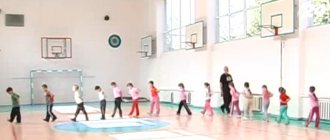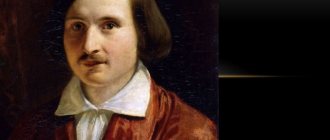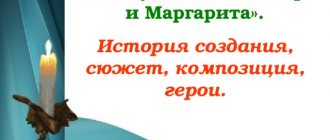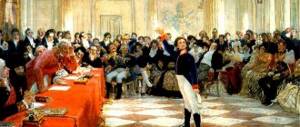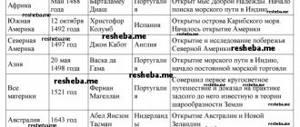What is a fairy tale?
A fairy tale is a general term. Different works are classified as this type of genre depending on what features are present in their content and text. Since a fairy tale belongs to the epic genre, it must have a plot and be presented in a narrative form.
Its content should be interesting and unusual. At the same time, there must be a clear distinction between good and evil. The reader or listener must understand exactly where there is truth in it and where there is falsehood. In fairy tales there is a confrontation between life and death. Each event described must be completed. Fairy tales do not tend to be unfinished.
The fairy tale can also be attributed to the narrative direction of folklore. These stories are passed down from generation to generation in the form of oral histories.
A fairy tale can also be called a story, because it has all the characteristics of a narrative genre. However, this factor does not become decisive. After all, there are other genres that cannot be classified as fairy tales, but they are narrative. For example, this includes ballads and epics. But people perceive the fairy tale as the basis of the narrative genre. After all, even the term itself is associated with the word “tell”.
One of the outstanding collectors of fairy tales, A.I. Nikiforov developed his own methodology for searching and classifying these works. He has devoted many works that relate to fairy tales as a form.
Nikiforov believes that fairy tales are oral stories that are used in society as entertainment. Their content is very unusual from the point of view of everyday form. They often contain elements of fantasy and miracles. There are quite a few everyday moments in them. They have a special compositional and stylistic structure. This scientific understanding of the fairy tale allows us to give it the most correct definition. All this characterizes the fairy tale as a genre of folk art.
The researcher also believes that the tale is told for entertainment purposes. But it also has aesthetic functions. This is a special artistic genre, which differs in many ways from ritual poetry, which is used for applied tasks.
Presentation “Types of fairy tales” presentation for a lesson on literature (grade 5)
Slide 1
Literature in 5th grade Fairy tale as a type of folk prose. Types of fairy tales. Developed by Marina Vladimirovna Soshina - teacher of Russian language and literature at Zaborsko-Nikolskaya Secondary School
Slide 2
OBJECTIVES: 1. To form an idea of fairy tales as a genre of folklore; consider the types of fairy tales (fairy tales about animals, fairy tales, everyday tales), their features and the characters of the heroes. 2. Develop students’ speech and creative abilities. 3. Cultivate interest in the study of oral folk art.
Slide 4
A fairy tale is an entertaining story about extraordinary, often fantastic adventures.
Slide 5
MAGICAL HOUSEHOLD TALES ABOUT ANIMALS
Slide 6
EVERYDAY (“Mush from an Axe”, “The Wrangling Wife”) MAGIC (“The Frog Princess”, “Sivka the Burka”) TALES ABOUT ANIMALS (“The Fox and the Wolf”, “Teremok”) Fantastic heroes. Items are helpers. The heroes show extraordinary personal qualities: intelligence, dexterity, ingenuity without the help of miraculous objects. Animals are endowed not only with speech, but also with human qualities and solve human problems.
Slide 7
Do you know fairy tales? Look at the illustration for the fairy tale. What is the name of this fairy tale? Briefly describe its contents. What type of fairy tale is this? Explain your answer. "Morozko"
Slide 8
Do you know fairy tales? Look at the illustration for the fairy tale. What is the name of this fairy tale? Briefly describe its contents. What type of fairy tale is this? Explain your answer. "The Fox and the Rooster"
Slide 9
PORGE FROM AN AX Look at the illustrations. What is the name of this fairy tale? Listen to her audio recording. Determine the type of fairy tale. Explain your answer.
Slide 10
Look at the illustrations. What is the name of this fairy tale? Listen to her audio recording. Determine the type of fairy tale. Explain your answer. FOX AND CRANE
Slide 11
Artistic features of the Russian folk tale Constant epithets - colorful definitions, signs of the subject, which are used in stable combination with one defined word “Water of Life”, “good fellow”, “fair maiden”
Slide 12
Artistic features of the Russian folk tale A saying is a rhythmically organized joke that precedes the beginning in fairy tales “The good story begins, begins from Sivka from Burka, from the prophetic Kaurka. This is not a fairy tale, but a saying. There will be a fairy tale on Saturday when you eat soft bread.”
Slide 13
Artistic features of the Russian folk tale The beginning is the beginning of the tale. “Once upon a time there was a peasant...” “Once upon a time there was an old man and an old woman...” “Far away, in the thirtieth kingdom, there lived a king and a queen...”
Slide 14
Artistic features of the Russian folk tale “And they began to live together and make good things.” “The fairy tale ends here, and well done to those who listened.” “And I was there, drinking honey and beer, it flowed down my mustache, but it didn’t get into my mouth.” Ending - the last words of a fairy tale, completion, a story about how the fairy tale ended, but more often an appeal to the listener or a story by the storyteller about himself.
Slide 15
Establish a correspondence between the concept and the quote from the fairy tale Ending Beginning Saying Constant epithets “In a certain kingdom, in a certain state, there lived a white bear, he put a watermelon on his head, a cucumber on his nose, and built a palace. This is not a fairy tale, a saying, a fairy tale will come.” “In a certain kingdom, in a certain state, there lived a king; this king had three sons, all of them were aged...” “Desperate little head”, “red-hot arrow”, “clean field”, “dark forests”. “They stayed, feasted and went to their kingdom; They arrived and began to live and live, make good and drink honey.”
Slide 16
Let's summarize: What is a fairy tale? A fairy tale is an entertaining story about extraordinary, often fantastic adventures. What types of fairy tales do you know? Magical, everyday, about animals. Give examples of fairy tales Give examples of fairy tales about animals Give examples of everyday tales
Slide 17
Homework 1. Answer questions 1-7 p. 10 of the textbook. 2.Read the fairy tale “The Frog Princess.”
Slide 18
https://muzofon.com/ https://900igr.net/ https://u7177341.m.letitbit.net/download3.php https://literaturologiya.academic.ru/ Resources used
Signs of a fairy tale as a literary genre
The attractiveness of a fairy tale is a sign that operates in tandem with another one - unusualness. At the same time, unusualness is perceived by people not only as some kind of unusual fantastic story. Unusuality can be of an everyday nature. Therefore, even short-story fairy tales fit this criterion.
Another feature that Nikiforov puts forward is a special compositional and stylistic structure. Both of these characteristics are easily combined into the general concept of “poetics”. The fairy tale has a rather specific poetics.
The scientist noted another sign, but did not reveal it well enough. This sign is that neither the narrator nor the listeners believe in the authenticity of the events being told. People initially perceive a fairy tale as fiction.
But there are also literary fairy tales. And if folk tales are created by the people, then literary tales are created by professional writers.
Often literary fairy tales combine both the real and the magical. They can be interesting not only for children, but also for adults. Children love the incredible fairy tale plot, they are fascinated by fiction, and receive joy from the victory of good over evil. They also like the fact that the events in the plot unfold quickly.
There is a whole direction in professional literature - this is a literary fairy tale. And this direction did not appear on its own. The basis for development was folk tales, which gained fame thanks to the work of folklorists.
Romanticism is an era that became intermediate between folk and literary fairy tales. Romantics found aesthetic images for themselves when they explored folk art. They perceived fairy tales as sources of literary creativity of their era and saw in them the basis of national culture.
Types of fairy tales. The plot and language of fairy tales
Fairy tales are one of the main types of oral folk poetry.
“The word “fairy tale” is used to describe moralizing stories about animals, fairy tales full of miracles, intricate adventurous stories, and satirical anecdotes. Each of these types of oral folk prose has its own distinctive features: its own content, its own themes, its own system of images, its own language... These tales differ not only thematically, but in the entire character of their images, compositional features, artistic techniques... in their entire style.”1
A characteristic feature of a fairy tale is poetic fiction, and an obligatory element is fantasticality. This is especially evident in fairy tales. The tale does not claim to be authentic in its narrative. The action in it is often transferred to the vague “far away kingdom, thirtieth state.” This is also emphasized by the remarks of the storytellers themselves, who perceive the fairy tale as fiction, with all its fantastic images: a flying carpet, an invisible hat, running boots, a self-assembled tablecloth, etc. The storyteller takes the listener into a fairy-tale world that lives in its own way laws Fairy tales depict not only fantastic faces and objects, but also real phenomena are presented in fantastic lighting. At the same time, moralizing, propaganda of goodness, justice, and truth are constantly present in fairy tales.
Fairy tales are distinguished by their national characteristics, but at the same time they have an international origin. The same fairy tales appear in the folklore of different countries, which partly brings them together, but they are also different, since they reflect the national characteristics of the life of a particular people.
Like any genre of folklore, a fairy tale retains the features of individual creativity, and at the same time is the result of the collective creativity of the people who have carried the fairy tale through the centuries. The fairy tales of each people specifically reflect the reality on the basis of which they existed. Fairy tales of the peoples of the world reflect common themes, plots, images, stylistic and compositional techniques. They are characterized by a general democratic orientation. Fairy tales express people's aspirations, the desire for happiness, the struggle for truth and justice, and love for the homeland. Therefore, fairy tales of the peoples of the world have much in common. At the same time, each nation creates its own unique and original fairy-tale epic.
Russian fairy tales are usually divided into the following types: about animals, magical and everyday ones. The plot is the main feature of a fairy tale, in which dream and reality are contrasted. The characters are contrastingly opposite. They express good and evil (beautiful and ugly). But good always wins in a fairy tale.
In many proverbs, fairy tales are compared to songs: “a fairy tale is a fold, and a song is a reality,” “a fairy tale is a lie, and a song is the truth.” This suggests that the fairy tale tells about events that cannot happen in life. The origin of the term “fairy tale” is interesting. In Ancient Rus', the word “fable”, “fable”, from the verb “to tell”, was used to denote the genre of fairy tale, and storytellers were called “bakhars”2. The earliest information about Russian fairy tales dates back to the 12th century. In the monument of ancient Russian literature “The Lay of the Rich and the Wretched,” in the description of a rich man going to bed, among the servants around him, those who “butt” and “blaspheme” are mentioned, that is, they tell fairy tales. This first mention of the fairy tale fully reflected the contradictory attitude towards it. On the one hand, a fairy tale is a favorite entertainment and amusement, on the other hand, it is branded and persecuted as something demonic, shaking the foundations of ancient Russian life.
Already in Ancient Rus', the main features of the poetics of fairy tales were formed, which influenced the ancient Russian scribes. In Russian chronicles you can find many fairy-tale phrases and images. There is no doubt that the fairy tale influenced the famous 13th-century monument “The Prayer of Daniel the Imprisoner,” in which the author, along with book quotations, uses fairy-tale elements.
In the historical and memoir literature of the 16th–17th centuries, one can find a number of references to the fairy tale, proving that at that time the fairy tale was widespread among various segments of the population.
“Tsar Ivan IV could not sleep without the stories of the bakhar. Three blind elders were usually waiting for him in the bedchamber, who took turns telling him fairy tales and fables. Famous storytellers include Vasily Shuisky, Mikhail and Alexei Romanov. As is clear from “Notes on fools, holy fools and others,” cited by I. Zabelin, storytellers were rewarded for the fables that they told, “according to the sovereign, the Tsar and the Grand Duke of this Rus' named order,” either azure cloth, or veal boots, or English cherry caftan.”3
Foreign travelers mention that Russians in the 17th century amused themselves by listening to fairy tales during feasts.
►
Literary tales
Literary fairy tales adopt the experience of other genres that the author is passionate about. They take the form of novels or dramas and also include elements of poetry. They can contain real drama or epicness, as well as lyricism.
Literary tales can intertwine different elements of tales about animals or magic, about everyday life or adventures. They can contain elements of detective stories and science, as well as be similar to science fiction or parody. The fairy tale appears from folk art. It can be based on a legend or a saga; it can even be based on a children's song or a small proverb.
V.Ya. Propp wrote that fairy tales are universal in nature. Any genre of literary creativity experiences an era of prosperity and decline. But fairy tales are immortal. Absolutely all people can understand them. A fairy tale easily transcends language boundaries, is passed on from one nationality to another and is kept alive for thousands of years.
This is due to the fact that the fairy tale includes eternal and unfading human values. The fairy tale is beautiful in itself. Based on fiction, it is nevertheless true and deep. She is sincere and cheerful. It contains wit and love of life. Childhood naivety and adult wisdom are closely intertwined in the fairy tale. Fairy tales allow a child to acquire a sober outlook on life.
The essence of a fairy tale
To understand the essence of a fairy tale, you need to explore different sources.
For example, according to V.I. A fairy tale is a fictional story that contains a story that is unprecedented and impossible in real life. A fairy tale is perceived in society as something instructive and incredible. This is a story about something that could never happen in real life, but it also contains a very important lesson. In the last century, collections of Russian fairy tales began to be actively published. And this type of book is still very popular in Russian families.
L.P. Strelkova describes fairy tales as narratives that are filled with fictional stories and characters, and also imply the participation of magic and fantasy.
According to the Russian language dictionary, fairy tales are narratives based on invented stories, in which fantastic forces usually take part.
According to other dictionaries, a fairy tale is one of the genres of folk art in which there is adventure, magic or everyday life, which is definitely fictional in nature.
L.S. Vygotsky points out that there are many different definitions of this popular literary genre. A fairy tale allows a child to understand the essence of complex relationships between people. Fairy-tale images illuminate life's problems, which a cold prose text cannot do. The tale conveys important thoughts in deep and emotional language.
A lot of works are devoted to the study of fairy tales by the author V.Ya. Propp. He analyzed a large number of fairy tales. This allowed him to draw the following conclusion: fairy tales have one type of structure. They all start and end about the same. But they are very diverse in content [Propp, 1998].
Fairy tales can be distinguished not only by external features. They are classified according to heroes, ideology, and storyline features. They can be combined by origin and history. And all this requires different approaches to study. Therefore, competent classification becomes the most important scientific task. But our science still does not have generally accepted ideas about how to classify fairy tales.
Classification of fairy tales
A.N. offers his classification. Afanasyeva. He believes that several categories can be included:
- About animals
- About people;
- Short story tales
- Fairy tales.
You can also identify several small discharges, which are represented by one or two cases. Today, cumulative and chain-like tales are also distinguished. We also believe that this is a competent approach to classification.
The peculiarity of Russian fairy tales is that they are primarily aimed not at entertainment, but at educating listeners. This can be seen even in popular folk expressions. For example, it is customary to say that a fairy tale is a lie, but there is a hint in it. Russian fairy tales describe manual work not as a heavy duty, but as an honorable duty for any person; they glorify many moral values.
Fiction is the main feature
The most important feature of a fairy tale is that its world and all events are based solely on fiction. When listing the characteristics of a fairy tale, one should begin with the ability to tear the reader away from everyday life and transport him to a fictional world that has no resemblance to the real one. Because in the fairy-tale world the boundaries of space and time are erased, and there are many examples of this: the thirtieth state, which is located far away, or the countdown of time, which is calculated in the magical system by such concepts as many and few.
Fairytale time is a circle that closes on itself. The fairy tale begins in a magical world, a space where the usual laws of physics do not apply and time is calculated according to completely different rules. Take, for example, the most common and most beloved technique used in fairy tales—threefold repetition (which occupies a leading place in the classification of “signs of a fairy tale”). It is usually used at the very beginning of fairy-tale events and allows you to slow down the development of actions. The ending, on the contrary, speeds up; by the way, it is always happy and often ends with a wedding.
Russian folk tales
Russian fairy tales instill a love of kindness and honesty, altruism and ingenuity. Fairy tales encourage people to come to the rescue. This is the most revered folk genre. Fairy tales are always fascinating; they open up to the listener the world of relationships between people, their feelings. They include large reserves of folk wisdom that remain relevant to this day.
According to L.P. Strelkova, folk tales contain a fantastic plot, filled with adventurism and not avoiding the everyday side of life.
V.Ya. Propp gives his view on the structure of fairy tales. He writes that a fairy tale has a special motive and plot. It has certain patterns for magic. For example, these tales have a certain repeatability, which makes them uniform, despite the great variety.
Fairy tales usually begin with some kind of misfortune. But sometimes trouble is replaced by a description of a situation in which something is missing.
The plot is most often based on the fact that the main character goes somewhere from home. Typically, the setup includes components that prepare the listener for trouble to occur. This could be a temporary absence, or it could be some kind of violation or prohibition.
The beginning also includes the misfortune itself or the shortage that replaces it. This also includes requests for help and sending a hero. Sometimes the hero himself shows a desire to come to the rescue. He is trying to be released, blessed or something like that. And so, at the end of the plot, the main character sets off on his journey.
Fairy tales
In any fairy tale there is always a so-called “giver”. This is a character whom the main character meets by chance. Often it may be an old man or an old woman. They can show the way, give some magical remedy or give an assistant.
Sometimes they just give a hint on how to find it. There is another type of donor. For example, it could be a grateful animal. Sometimes the animals themselves are ready to serve the hero, telling him how to call them. In other cases, they may give the hero their cub. Any help is given to the hero as a reward for a good deed, and not just like that.
With the help of such a gift, the plot is replenished with a new character. One of the categories is grateful animals.
Another category is some kind of fantastic living creatures. For example, it could be some kind of artist who has an extraordinary ability.
The fact that a fairy tale is very variable in nature forces the listener to personally interpret the plot in their imagination. He can interpret the actions of the characters in his own way, give personal characteristics to the characters and evaluate their actions. So he becomes, as it were, a subject of interaction and feels like a co-author of the fairy tale. This is manifested in the fact that the text is individualized by him, the reader experiences the plot in his own way and experiences unique emotions.
A fairy tale also has a so-called creative function. It is a way to identify and shape a person’s creative potential, realize his abstract thinking and form mental images. The magical fairy-tale world, the presence of unreal elements in it, as well as the ability of the plot to invite the listener to co-authorship, enable listeners to overcome stereotypical thinking. The child ceases to feel alienated, and his dormant creative abilities begin to awaken.
Poetics of magic
Let's summarize: what signs of a fairy tale have we discovered? It has a special composition; it contains such a technique as threefold repetition; the fairy tale has unusual, magical plots in which miraculous transformations often occur; it also has negative and positive heroes, and good necessarily defeats evil.
It is not at all difficult to identify the characteristics of a fairy tale - it is necessary to include in the content a certain attitude towards fiction, which will determine the poetics of the fairy tale. In it, two worlds exist in parallel - the real and the magical, into which the hero finds himself from the real. The fairy tale traces the motive of a journey, during which the main character will have to go through many tests and overcome obstacles. Also in a fairy tale, the hero is often helped by some kind of magical assistant or accompanies him to his cherished goal. Often, the main character is given various magical objects as a gift for performing a good deed.
